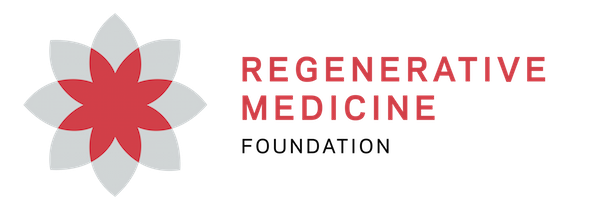Image caption: Clinical trials funded by the California Institute for Regenerative Medicine (CIRM) includes work on so-called induced pluripotent stem cells (iPS cells), which are depicted here. (Courtesy of California Institute for Regenerative Medicine)
Promising research in danger of languishing
By LAWRENCE S.B. GOLDSTEIN, AILEEN ANDERSON & MALIN BURNHAM Sep. 25, 2019 | 3:43 PM San Diego Union-Tribune Link to full article
Evangelina Padilla Vaccaro was born with “bubble baby” disorder owing to a barely functional immune system. She was doomed to live with recurring infections and faced a dramatically shortened lifespan. Fortunately, Evangelina received a stem cell-based treatment that restored her immune system. She now lives a near normal life.
Clinical trials at UCLA, UC San Francisco and Stanford funded by the California Institute for Regenerative Medicine (CIRM) appear to have given more than 50 children like Evangelina their lives back. These trials are on track to achieve FDA approval. Similarly, many other patients with crippling or near-fatal diseases are also dramatically improving because of experimental stem-cell based therapies in CIRM-funded clinical trials.
CIRM was established in 2004 when nearly 60% of California voters passed a ballot initiative committing $3 billion to fund stem cell research and therapy development for 10 years. CIRM funding has established an impressive pipeline of new stem cell-based therapies being tested in 78 human trials directly funded by CIRM or based on CIRM-funded research. CIRM funding has also led to over 3000 published medical discoveries.
CIRM funding also attracted substantial philanthropy and matching funds totaling $3.6 billion, doubling funding approved by California voters. In San Diego, Denny Sanford’s inspired generosity helped establish the multi-institutional Sanford Consortium for Regenerative Medicine and the Sanford Stem Cell Clinical Center at UC San Diego.
CIRM funded critical early-stage research at the Sanford Consortium for Regenerative Medicine and UCSD that played a crucial role in the development and FDA approval of two new highly effective cancer drugs targeting cancer stem cells in various types of blood and bone marrow cancers. CIRM supports many other clinical trials at UC San Diego in the Sanford Stem Cell Clinical Center. Similarly, CIRM funding at the Sue & Bill Gross Stem Cell Research Center at UC Irvine led to Phase I and II clinical trials for retinal disease and spinal cord injury.
CIRM funding also helped develop research centers that safeguard this work from politically motivated federal restrictions. Before CIRM, attacks on stem cell research effectively froze promising research by blocking the use of federal funding for important types of stem cell research. These attacks have been renewed leading to restrictions on federal funding for some types of stem cells.
Across California, there are CIRM-funded clinical trials for diabetes, arthritis, blood disorders, blindness, cancer, ALS, and more. Additional promising advances are in the pipeline, waiting for funding to progress to clinical trials and better treatments. These include autism, liver disease and Alzheimer’s disease. This research needs the help of California voters to have a chance of delivering on its potential. CIRM is up for renewal on the 2020 ballot. Development of new treatments will languish unless Californians renew their commitment to CIRM and continued development of stem cell therapies. This new initiative will invest $5.5 billion over 10 years to continue stem cell research and therapy development.
Some opponents of renewing CIRM are motivated by extreme ideology or short-sighted fiscal arguments. However, the new initiative does not create new taxes. Funding comes from bond sales amortized over 40 years costing less than $5 per Californian per year. This funding is expected to attract billions in matching and leveraged private and philanthropic funds, further accelerating the therapy development.
In 2020, Californians can continue their commitment to the best forms of stem cell research and therapy development. While there are no guarantees in medical research, if prior achievement is any indication, the next initiative will push many breakthrough therapies across the finish line. Considering the potential benefits to Californians and the opportunities to improve lives and alleviate suffering, there is little to lose, and an incredible amount to gain.
Goldstein is a professor at UC San Diego and the Sanford Consortium for Regenerative Medicine, Anderson is a professor at UC Irvine and Burnham is chairman of the Burnham Foundation.



